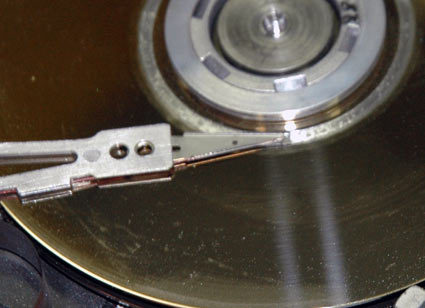Saving Your Data After a Head Crash: An Inside Look at a Disk Recovery Service
The Odds Of Getting Your Data Back And The Price To Pay
Hard disks are still relatively sensitive components. There's a particular risk of mechanical problems if the heads touch the surface due to strong vibrations.
A brief search on the Internet usually yields a few candidates for possible recovery of data. If time isn't a factor, it pays to compare prices: Because we're talking about a service that is highly customized, costs are very high.
Most of the time the process begins by sending in the defective data storage device so that it can be tested by the data recovery company. Only after a diagnosis has been made can the company estimate how much time it will take before they give you a cost estimate.
In many failure-related cases, the chances of recovering data from a hard disk range from good to very good. If the electronic system is the only thing affected, then the drive can often be reused after the control panel has been replaced. If, on the other hand, the defect is of a mechanical nature, then recovery will be a bit more difficult. So long as the drive components can be replaced, expenses can be kept to a minimum. However, if special equipment is required, then the bill will quickly run up into the range of four figures.
Data recovery only becomes critical once considerable physical damage has occurred, e.g., due to flooding, fire or the drive falling from a long distance. But, even still, hope is not lost: Even in these cases, the chances are good that at least a part of the saved data can be reconstructed.
No doubt it's clear that all this expense can be avoided from the outset. Important data should always be backed up on a regular basis; and preferably in such a way that the data can be stored in another location. If, after completely installing your computer, you create an image of the installation and update it as required, then you'll have no problem restoring the system's operability in 30 - 60 minutes after purchasing a hard disk replacement. This is certainly cheaper than a costly data recovery.
Defective Sectors
Hard drives have two lists for defective sectors, so that the drive's electronic system can avoid them. With the so-called P sector list, the manufacturer takes this into account, allowing flexibility: The memory disks can accommodate more data than the manufacturer quotes in the end. Therefore, in any event, a sufficient number of sectors is available for the nominal storage capacity to be achieved. In theory, this does impact performance; in practice, the differences are never ever measurable. The second list is called the G list and is compiled during operation. It contains the sectors that have become unworkable during operation, and it can serve as an indicator as to the type of defect.
Get Tom's Hardware's best news and in-depth reviews, straight to your inbox.
Current page: The Odds Of Getting Your Data Back And The Price To Pay
Prev Page The Hard Disk Failure Nightmare Next Page The Initial Contact
Patrick Schmid was the editor-in-chief for Tom's Hardware from 2005 to 2006. He wrote numerous articles on a wide range of hardware topics, including storage, CPUs, and system builds.
